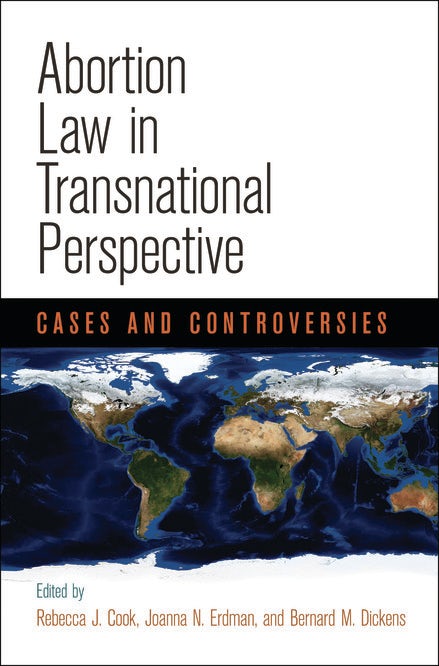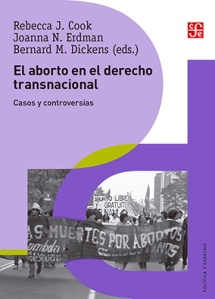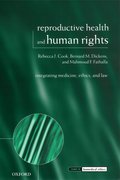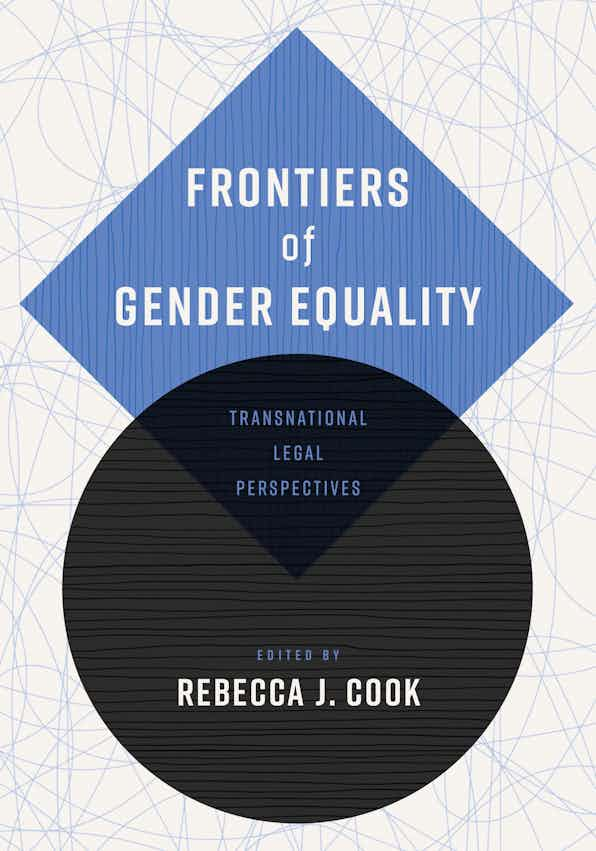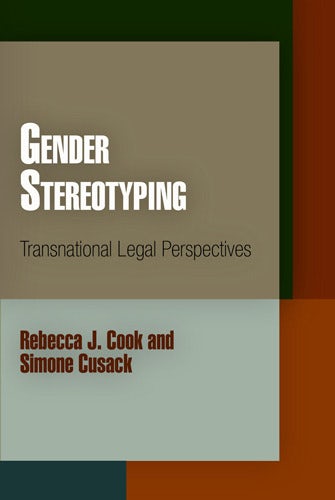Congratulations and thanks to Professors Rebecca Cook and Bernard Dickens, whose article on comparative abortion law is the first chapter in the 3rd edition of Elgar Encyclopedia of Comparative Law, edited by Jan M. Smits, Jaakko Husa, Catherine Valcke, and Madalena Narciso (Cheltenham, UK: Elgar Publishing, 2023). It is now freely available online. We are pleased to circulate the following abstract:
Rebecca J. Cook and Bernard M. Dickens, “Abortion,” in Jan M. Smits, Jaakko Husa, Catherine Valcke and Madalena Narciso, eds., Elgar Encyclopedia of Comparative Law, 3rd ed., (Cheltenham, UK: Elgar Publishing, 2023), 3-11. Full text of this chapter is currently online here.
Induced abortion is regulated under restrictive or accommodating provisions of different jurisdictions’ criminal, constitutional and administrative law. Provisions usually fall under discernible patterns. One allows exemptions from prohibition on indications such as danger to a pregnant person’s life or continuing health, pregnancy by rape, or severe fetal impairment. Another permits abortion on request within a specified time and thereafter on specified indications, or before independent fetal viability. An expanding trend is toward decriminalization, regulating abortion without specific criminal penalty as other routine healthcare procedures.
Much can be learned from comparing how courts apply public health, autonomy and equality rationales to interpret constitutions when addressing abortion contests. Courts weigh constitutional values or interests of fetuses, sometimes from conception, against women’s rights, usually upholding rights. Within governing law, health ministries often provide subordinate regulations promoting a better understanding of how abortion laws should apply, for instance to medical (non-surgical) abortion.
In general, comparative abortion law requires microscopic vision to learn how criminal, constitutional and administrative laws are applied in particular national contexts to address the challenges of unwanted pregnancies. It also requires telescopic vision to learn how these laws are diffused, transplanted and received across jurisdictional borders in order to reinforce or disrupt efforts to achieve reproductive justice.
The full text of this article is online here.
RELATED RESOURCES:
“Recursos Jurídicos” del RepoCLACAI – For a comprehensive and searchable database of legal resources on abortion care in Latin America, visit the Legal Section of the CLACAI Repository “Recursos Juridicos” online.
The WHO Abortion Care Guideline: Law and Policy–Past, Present and Future,” by Joanna N. Erdman, in International Journal of Gynecology and Obstetrics, 162.3 (Sept 2023): 1119–1124. PDF at Wiley Online.
Abortion Law Decisions webpages, now updated in English and in Spanish.
________________________________________________________________________________________
Contributed by: The International Reproductive and Sexual Health Law Program, reprohealth*law at utoronto.ca. See Program website for our Publications, Research resources, and Reprohealthlaw Commentaries Series. TO JOIN THE REPROHEALTHLAW BLOG: enter your email address in the upper right corner of this blog, then check your email box to confirm.
